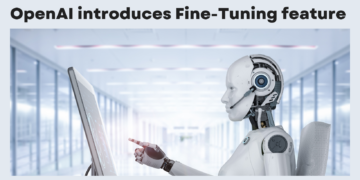Generative AI stands at the forefront of innovation, reshaping our world through its ability to create human-like content across various mediums. This field has witnessed remarkable advancements in the last decade, driven by techniques rooted in deep learning, transformer models, and neural networks. According to Forbes, what are the 4 types of generative AI and their transformative impact on diverse domains?
Large Language Models (LLMs)
Large Language Models are one of the most important of the 4 types of Generative AI. They include popular AI tools like ChatGPT, Claude, and Google Gemini. Fueled by vast amounts of text data, these models harness neural networks to understand the intricate relationships between words. LLMs generate coherent text and computer code by predicting the next word sequentially. Moreover, through fine-tuning specialized domains, they excel in tasks ranging from language translation to sentiment analysis. However, their proliferation has raised ethical concerns surrounding bias, misinformation, and deepfakes, underscoring the need for responsible deployment.
Diffusion Models
Diffusion models revolutionize image and video generation through iterative denoising. Starting from a textual prompt, these models generate random noise like scribbling on a canvas. Through successive refinement guided by training data, they eliminate noise, crafting photo-realistic images and videos that align with the input prompt. Notable examples like Stable Diffusion and Dall-E showcase the potential to create diverse visual content, including lifelike images and artistic renditions. The recent strides in video generation, exemplified by OpenAI’s Sora model, underscore the expanding capabilities of diffusion models.
Generative Adversarial Networks (GANs)
Generative Adversarial Networks, introduced in 2014, remain pivotal in generating synthetic content across text and images. By pitting a generator against a discriminator in a game-like framework, GANs iteratively refine their output, striving to create content indistinguishable from accurate data. Despite predating LLMs and diffusion models, GANs retain their versatility and efficacy in computer vision and natural language processing tasks. Their application spans diverse domains, contributing to picture, video, text, and sound generation advancements.
Neural Radiance Fields (NeRFs)
Neural Radiance Fields, the newest entrant, specializes in creating 3D object representations using deep learning. By predicting volumetric properties and mapping them to 3D spatial coordinates, NeRFs reconstruct detailed three-dimensional scenes from two-dimensional images. Spearheaded by Nvidia, this technology finds applications in simulations, video games, robotics, architecture, and urban planning, facilitating immersive experiences and enhanced visualization.
Hybrid Models in Generative AI
The latest frontier in generative AI is marked by hybrid models, which amalgamate diverse techniques to unlock novel content generation systems. These models synergize the strengths of different approaches, such as blending GANs’ adversarial training with diffusion models’ denoising to yield refined outputs. By integrating LLMs with other neural networks, hybrid models offer enhanced context and adaptability, fostering more accurate and contextually relevant results. Noteworthy examples include DeepMind’s AlphaCode and OpenAI’s CLIP, showcasing the versatility and potential of hybrid approaches across various domains.



























